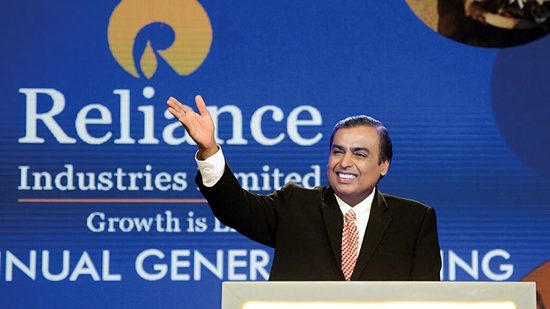
After three years of investing massive capital, foreign portfolio investors withdrew massively from Indian stocks in 2022, with the highest-ever yearly net outflow of approximately Rs 1.21 lakh crore.
The massive outflow, which exceeds the previous record of Rs 53,000 crore net withdrawal in 2008, occurred during aggressive rate rises by central banks throughout the world. However, 2023 is projected to be better due to optimism about general macroeconomic trends in India, according to analysts.
Aside from global monetary tightening, fluctuating oil, rising commodity prices, and the Russia-Ukraine crisis all contributed to a foreign money outflow in 2022.
According to Manish Jeloka, Co-head of Products and Solutions at Sanctum Wealth, the quantity of FPI outflows may not be as significant as observed in the first half of 2022 because India’s development is comparatively promising compared to other established and emerging nations.
According to Sanjiv Bajaj, Joint Chairman and MD of Bajaj Capital, FPI flows in 2023 would be determined by various variables, including the US Federal Reserve’s policy stance, oil price movement, and geopolitical developments.
According to statistics available with depositories, foreign portfolio investors (FPIs) made a net withdrawal of Rs 1.21 lakh crore (almost USD 16.5 billion) from Indian stocks and a net outflow of roughly Rs 16,600 crore (USD 2 billion) from the debt market until December 28.
This was the worst year for FPIs in terms of flow, and the pullout from stocks comes after three years of net investment.
FPIs invested Rs 25,752 crore in stocks in 2021, compared to Rs 1.7 lakh crore in 2020, the best year, and Rs 1.01 lakh crore in 2019 Indian stocks.
A net outflow was last witnessed in 2018 (Rs 33,000 crore), and 2022 would be only the fifth year in FPI history when they were net sellers of Indian shares (the others being 2011 (Rs 27,000 crore), 2008 (Rs 53,000 crore), and 1998). (Rs 740 crore).
This year, most major central banks began normalizing monetary policy, resulting in the withdrawal of hot money from developing countries such as India. According to Bajaj, this resulted in an unprecedented price surge (inflation) in most economies.
Domestically, the situation was also unfavorable. Rising inflation remained a source of concern, and the RBI raised rates to combat it, casting a shadow over the domestic economy’s development prospects, according to Himanshu Srivastava, Associate Director – Manager Research, Morningstar India.
Another factor that contributed to the withdrawals from domestic stock markets was their high valuation in comparison to other comparable markets, he noted Indian stocks.
This has also resulted in foreign investors taking profits and moving their emphasis to other markets that are more appealing in terms of value and risk reward.
“The withdrawal of foreign portfolio equity investment was driven more by decreased investor risk capital and monetary tightening than by India-specific reasons,” stated Pradeep Gupta, Co-founder and Vice Chairman of Anand Rathi Group.
In the debt market, FPIs sold out for the third year in a row, with a net outflow of Rs Rs 16,600 crore in 2022. They had withdrawn Rs 10,359 crore in 2021 and Rs 1.05 lakh crore in 2020.
In the aftermath of stock market concerns, FPIs have chosen the loan segment to park short-term assets. As a result, they continued to purchase occasionally in the debt category, limiting outflows from the sector, according to Morningstar India’s Srivastava.
“In general, from a risk-reward standpoint, and with interest rates rising in the United States, Indian debt does not look to be an appealing investment option for international investors,” he added.
On average, India receives 2-3% of global cross-border portfolio equity flows. Since 2000, this is only the fourth year in which Indian stocks have had a net outflow.
Historically, whenever there has been an outflow of foreign investors from stocks, there has been a substantial inflow in the early following. Following outflows in 2008, 2011, and 2018, India will get USD 20 billion in annual inflows over the next few years, according to Anand Rathi Group’ Gupta.
“Based on previous precedents, India is anticipated to attract significant foreign portfolio equities inflows throughout 2023 as well,” he added.
The huge selling by FPIs has been absorbed by domestic institutional investors (DIIs), notably mutual funds and insurance firms. This reflects the growing clout and maturity of local investors.
FPIs began the year 2022 on a sour note, and the exodus of “hot money” lasted until June. They withdrew Rs 2.17 lakh crore from stocks in the first six months of this year, owing mostly to central banks throughout the world, notably the US Federal Reserve, terminating its ultra-easy pandemic-era monetary policy.
This was followed by a series of aggressive rate rises, which reduced system liquidity.
FPIs gradually resumed their presence in Indian markets in July, with a net investment of Rs 4,989 crore in July and Rs 51,204 crore the following month, owing primarily to the resilience of the Indian economy and markets through these trying times.
They did, however, withdraw money in September and a little sum in October. FPIs’ posture has shifted since the latter week of October when they began pumping money into the market, and the trend has continued into December.
This was followed by a series of aggressive rate rises, which reduced system liquidity.
FPIs gradually resumed their presence in Indian markets in July, with a net investment of Rs 4,989 crore in July and Rs 51,204 crore the following month, owing primarily to the resilience of the Indian economy and markets through these trying times.
They did, however, withdraw money in September and a little sum in October. FPIs’ posture has shifted since the latter week of October when they began pumping money into the market, and the trend has continued into December.
In terms of sectors, since FPI flows reversed in July 2022, financials have contributed the most, followed by consumer and capital goods.
According to Sanctum Wealth’s Jeloka, financial services accounted for 26 percent of overall net inflows of Rs 85,000 crore from July to November this year, owing to improving credit demand. Demand recovery post-peaking of inflationary factors and an impending uptick in Capex are likely reasons for the positive stance on consumption and capital goods, respectively.
On the other hand, FPIs have been seen reducing their positions in information technology companies, which may be ascribed to high valuation levels as well as the impact on expenditure due to the global crisis, he noted.
In the short to medium term, FPIs are projected to maintain their investments in Indian stocks, albeit with caution, according to Morningstar India’s Srivastava.





